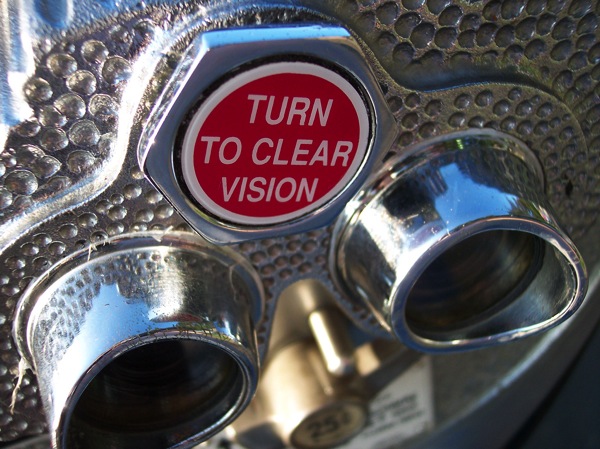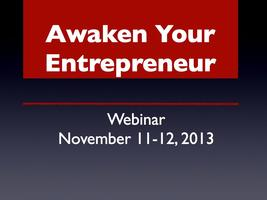What will you be doing in five years? Ten years? What will you have achieved? It is up to you to create a vision for your future. Unfortunately, most people have no vision for their future. So, here I will show you how to write one.
Photo courtesy of Flickr/Creative Commons/C.P.Storm [/featured-image]
Click to Listen
[powerpress]
*NOTE: If you are reading this in email, you will need to go to Itunes or my blog to get access to this show.
The Future News
The other day I was in a meeting with our dean of engineering. He showed me the powerpoint slide he was going to share with the faculty displaying his vision for the School of Engineering. It was a newspaper article dated October 4, 2028 (15 years in the future). He had taken the web link from the newspaper and used it as a template, changing the title and the text of the article to spell out his vision of what would be written about the School of Engineering fifteen years in the future. The article was written as if it had already happened and was being reported on in the news. His creativity with his presentation demonstrates how much thought he has given to where he wants to take the department, and how much passion he was putting behind his goals.
What is Your Vision?
What about you and your work? What does your vision look like? Let’s try to set it now.
- What do you want to accomplish in 5 years?
- Where would your accomplishment be reported? A newspaper? Website? Family reunion newsletter? Does not matter, but get specific. If a newspaper, which one? Your local paper or the Wall Street Journal?
- Write the article about what you have done as if someone else (who is highly impressed with you and your accomplishments) is reporting on it. Give specific details such as dates, times, people, cities, etc. Again, like a reporter.
Examples of Future Vision
Jack Canfield writes many examples of people with vision in his book Success Principles. Here are a few of them:
– Monty Roberts (the real Horse Whisperer) drew out his entire ranch and house in detail when he was in high school. Today his ranch looks much like his original drawing.
– Jim Carrey wrote himself a check for $10,000,000 with “for acting service rendered” in the memo field and kept it in his wallet.
– Jack Canfield and Mark Victor Hansen edited the New York Times bestseller list and put in their book Chicken Soup for the Soul on the top. They hung the list on their wall as a constant reminder of what they were working to do.
Why Having a Future Vision Works
When you express your future vision as if it is being reported in a newspaper right now, you have to be concrete with your goals (or in the article’s case, your achievements). In his article, our dean explained that the School of Engineering was beginning its third stage of a three part plan to change the face of online learning. He had a diagram drawn to show how we do it today (in 2028) as if it was a current diagram of work flow. This made the goal concrete. He now knows what he is after and has a concrete outline for reaching that goal.
The biggest issue I see that holds us back is lack of clarity in our vision. We have no idea what we want. Instead, we just show up day after day to work letting someone else decide our future. Why?
Action Wins
“I have been impressed with the urgency of doing. Knowing is not enough; we must apply. Being willing is not enough; we must do.”– Leonardo da Vinci
Awaken Your Entrepreneur
Join me November 11 and 12 where I will be leading a webinar on Awaken Your Entrepreneur. We will meet two nights from 7-9PM CST. For more details, go to https://aye13.eventbrite.com/.
Episode Resources
In this episode I mentioned some resources and links, including:
- Blog Editors
- Mars Edit for MAC
- Windows Live Writer – For Windows
- Google Feedly – Great tool for blog reading.
- UAB School of Engineering
Subscription Links
If you have enjoyed this podcast, please subscribe:
Your Feedback
If you have an idea for a podcast you would like to see or a question about an upcoming episode, e-mail me.
Also, if you enjoyed the show, please rate it on iTunes and write a brief review. That would help tremendously in getting the word out! Thanks.
[reminder]What is your vision? Do you dare to share? [/reminder]







Good stuff as always, Dale. I always try to tell myself to “visualize wild success” when goal-setting. Writing yourself a check for $10,000,000, now that’s “wild success”. 🙂
Agreed! Who wants tame success;)
Good job Dale. Visualization is very powerful.
Someone in my accountability group told me today that we should consider “what would blow my mind if it happened” 😉
Hi Dale
This is Gayle and I really liked listening to your podcast. I too have been struggling a lot on figuring out what exactly my vision is. I do know if want to start my own business. I am a chef, however it’s so exhausting to thing to where to start regarding how do I know what line to get into. I love making food and I also love baking. I know I cannot manage both, how do you decide what works? And how can you try both these out without investing in equipment first? For example- I can’t test out running a kitchen without buying every thing I need to try it out. What would your thoughts be on how to go along?
Hi Gayle,
So sorry for the delay getting back – spam filters got a little aggressive.
The idea of starting a business that costs a lot up front comes up a lot. Here is the basic strategy we (and many others) use.
1. Find someone who has the required equipment and will let you use or rent. Might be a restaurant that does not open on the weekend, a church who has faculties and does not use often, etc. MIght even be a personal home that has enough to qualify. The main point is you need to test before you think about investing. There are MANY food services places that rent facilities for a year or more before they buy their own.
2. Test foods and markets to find your niche. No need to try to do it all – focus on one thing at a time. Catering, baking, etc. To pick – do the one you love the most!
3. Listen to your customers and ask for a lot of feedback.
4. Evaluate where you are in 2-3 months and rethink your plan.
This all can take time to find locations – but worth it. In the meantime, you will make great connections and also find good partners and maybe customers. I know of a local restaurant to me who is famous for their biscuits. But the company does not make them – another team (company) comes into their kitchen in the morning before the open and makes them all. So they have a built-in partnership.
Hope this gives you some places to start.
Dale